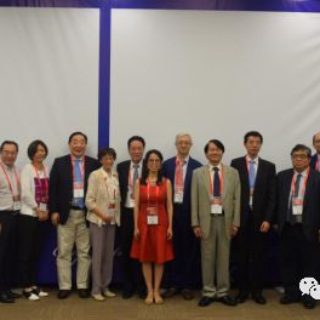Academic Career as a physician and/or scientist—How to Make it work!

On this coming Saturday (Sept11, 2021), CNAHA is honored to host a virtual talk/discussion
event featured by Dr. Mark Anderson who is a world-renowned physician-scientist. He will be
giving advice on how to manage a research lab and at the same time to handle a busy clinical
life. The event will have a 20-min talk on his major scientific findings and career path and advice
followed by a 30-min discussion. The goal of this event is to help young cardiologists and/or
researchers for their academic career development and develop their own basic/clinical research
programs. Please take advantage of this unique opportunity to make your best effort to
participate.
Dr. Mark Anderson is the William Osler Professor of Medicine, the director of the Department
of Medicine in the Johns Hopkins University School of Medicine and physician-in-chief of The
Johns Hopkins Hospital. He is a renowned physician, researcher, and educator.
His group was the first to identify CaMKII, a serine-threonine kinase, as a pro-arrhythmic
signal and therapeutic target (US Patent #6,518,245 and US Patent #7,251,525). His lab also
found that CaMKII augmented voltage-gated Ca2+ current (Anderson Circ Res 1994) and that
this property contributed to arrhythmia-triggering early (Anderson JPET 1998; Wu Am J Physiol
1999) and delayed (Wu Circ Res 1999) after-depolarizations. Through his work and the work of
many other groups, CaMKII is now recognized to affect multiple ionic currents, Ca2+
homeostatic proteins and is a widely validated pro-arrhythmic signal and therapeutic target.
These findings led to patents and motivated active industry efforts to develop CaMKII inhibitor
drugs, in part, to treat cardiac arrhythmias.
His group was also the first to publish evidence (Zhang Nat Med 2005) and win a patent
(US Patent #7,320,959) that myocardial CaMKII inhibition was protective against clinically
relevant models of heart failure in mice. CaMKII is now widely celebrated as a nodal signal for
orchestrating diverse, maladaptive mechanisms in the syndrome of heart failure. There are now
several active commercial programs for developing CaMKII inhibitory drugs for heart failure
and arrhythmias. His group also identified CaMKII as a critical signal for supporting
physiological fight or flight heart rate acceleration by enhancing sarcoplasmic reticulum Ca2+
uptake and release and discovered that excessive CaMKII activation by angiotensin II or
hyperglycemia led to SAN cell death and pacemaker dysfunction. In addition, his group revealed
the underlying mechanism how CaMKII is activated by oxidant stress. And oxidized CaMKII
(ox-CaMKII) contributes to cardiovascular, metabolic and pulmonary disease.



